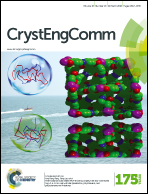Enhancement of plasma illumination characteristics via typical engineering of diamond–graphite nanocomposite films
Abstract
Microstructural engineering of a diamond–graphite nanocomposite (DGC) with requisite properties in order to enhance the plasma illumination characteristics is being established via bias enhanced nucleation and growth of the nanocomposite material on silicon substrates using a microwave plasma (CH4/N2/H2) enhanced chemical vapor deposition method. Inspired by the concept of structure–property relationship, the microstructure of the DGC films is altered via varying the %H2 gas inclusion in the plasma. Consequently, the electrical conductivity, field emission (FE) properties and the plasma illumination characteristics of the DGC films are optimized depending upon their microstructure as well as morphological characteristics. The films grown using the optimum level of H2 (0.01%) encompass a diamond core with a needle-like morphology encased in layers of an sp2-bonded graphitic phase exhibiting an onion-like hierarchical structure forming a continuous network throughout the film and act as a matrix. The nano-sized diamond grains with needle-like morphology encased in graphitic layers is an exclusive choice of cathode material for plasma device applications as the Ar plasma of the DGC device can be triggered by a voltage as low as 310 V and possesses a better lifetime (14 h). The underlying mechanism of the microstructural engineering of the diamond–graphite nanocomposite is being proposed.


 Please wait while we load your content...
Please wait while we load your content...